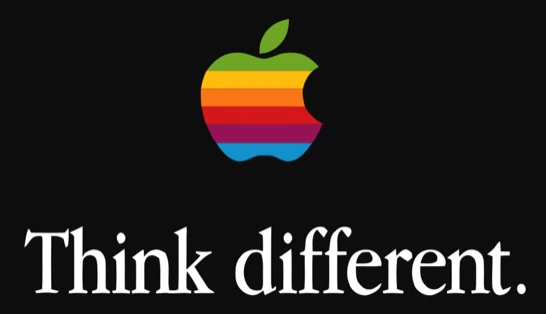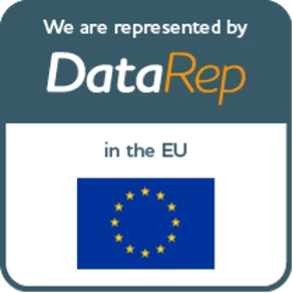Do I really need to read an article on psychographics?
Chances are, if you are a B2C or B2B marketer in the process of devising your brand’s marketing and communications strategy, or if you are a market researcher involved in brand and communications research, then psychographics should be highly relevant to you.
This article will explain:
- What psychographics is
- Why it is important right now
- How to go about obtaining psychographic insights
- Where they can be applied
The Cambridge Analytica effect
Before we kick-off in earnest though, if you are thinking that you have heard the term psychographicsrecently but can’t remember when or why – this may help.
It could be that you came across it in 2018, in connection with Cambridge Analytica, the UK-based, data analytics firm that specialised in helping political parties target online voters.
Cambridge Analytica obtained the psychographic data of US Facebook members and used it to create a personality-based segmentation model. That model was in turn used to craft segment-specific political messages that were then used to target different voters during the 2016 US Presidential Elections.
Actually, it’s a great psychographics case study, but one shrouded in a little too much corporate and political controversy!
So, what exactly is psychographics?
OK, let’s start with the authoritative definition. The Oxford English Dictionary describes psychographics as‘…the study and classification of people according to their attitudes, aspirations and other psychological criteria, especially in market research’.
This is in contrast to demographics – where people are classified according to socio-economic criteria, such as age, sex, marital status, education level, occupation and income.
Consider the demographic profile below:
- Male
- Aged 35-55
- Educated to degree-level
- Married, with children
- Joint household income of £70K
Whilst the profile identifies who the target is, it actually gives the marketer very little work with and any marketing activity based on this level of data is likely to be of the spray and pray variety.
Now consider the following, basic psychographic profile for the same, target audience:
- Hectic work / family life – devoted family man
- Hates ‘bricks and mortar’- prefers online shopping
- Enjoys online gaming, cooking, armchair sports and go-karting with friends to relax
- Looking for time-efficient way to get fitter
- Has a goal of retiring before the age of 60
- Would love to travel more widely
- Community minded and would also like to undertake charity work locally
When combined with the demographics, the marketer not only knows who the target is, but also what they are interested in.
For example, there is:
- A list of hobbies which can be targeted by individual product and service providers:
- An intention to retire early, which will be of great interest to Financial Planners.
- A clear sense of community spirit, which will be relevant to local charities.
Finally, our target prefers to shop online, providing marketers with a clear understanding of how best to approach him.
But psychographics isn’t just about identifying the interests and behaviours of target consumers. It can also be used to explore the psychological motivations that underpin them. These can then be used to create marketing communications with real emotional resonance.
In the case of our target, these motivations can be identified by using the research to address such questions as:
- What is driving the target’s desire for early retirement?
- What is it about travel that interests him and how does it make him feel?
- What does local community mean to him – and why?
The psychological criteria encompassed by psychographics
The full list of psychological criteria encompassed by psychographics is actually a long one.
Three of the main types are actually grouped together and are called IAO’s, short for Interests, Activities and Opinions.
Interests
Interests are different from activities in that they are typically connected to areas of the subject’s life that are more profound in nature.
For example, an interest in healthy eating for kids may relate to the fact that the subject has a young and growing family, whereas an interest in Mindfulness may reflect a hectic and pressurising professional life.
Activities
This refers to pastimes or hobbies that may be active or passive in nature. Think tennis, stamp-collecting, cooking, or travel!
Why are activities included in a list of psychological criteria? Because they are typically reflective of an individual’s personality.
Opinions and Attitudes
These two can be tough to distinguish between!
An attitude represents a feeling or general disposition toward someone or something. It can be either positive or negative, but it more commonly just is.
For example; ‘You get what you pay for’, ‘life is for living’ or ‘children should be able to entertain themselves’.
On the other hand, an opinion is a more specific, passionately held belief. The subject of that belief maybe serious (e.g. intensive farming or global warming) or trivial (e.g. Mac versus PC, KFC versus McDonalds) in nature.
The importance of being on the right side of public opinion was highlighted the 2016 survey conducted by leading global communications marketing firm Edelman (https://www.edelman.com).
This first-of-its-kind survey of 13,000 consumers in 13 countries revealed that 62% of consumers stated that they would not buy a brand that failed to meet up to its societal obligations and 55% agreeing that brands can do more than governments to solve societal problems.
Lifestyle
Lifestyle is an obvious criterion and it has lots of implications for marketing.
A person’s lifestyle provides a very good indication of what that individual actually places value upon. It may be the result of their situation (e.g. a frugal lifestyle may be reflective of low income), but when it is self-imposed then it is more likely to be reflective of fundamental beliefs, desires or interests.
Examples of different lifestyles include healthy, ostentatious, active, religious and alternative.
Values
Personal values are typically based on deeply-held beliefs and often ‘inherited’ from parents.
Just as common values can act as a form of familial or friendship bond, so a brand that shares or aligns itself with core consumer values may be regarded as a kindred spirit.
Take Iceland – the UK-based frozen food chain. For Christmas 2018 the company created an ad highlighting the disastrous environmental effects of cultivating palms for palm oil.
The ad was supposedly banned from TV because of its overtly political message but because it tapped in to the environmental concerns of a large number of UK citizens it quickly became a viral hit, racking up over 30 million views (and counting) on YouTube.
It has also succeeded in securing a new legion of environmentally conscious fans for the company. If you haven’t seen it you can check out the ad here:
https://www.youtube.com/watch?v=JdpspllWI2o
How is psychographics actually used in marketing?
1) Creating advertising with the power to truly resonate
Many successful ads succeed precisely because they manage to establish a powerful emotional connection between brand and consumer.
Of course, this isn’t always based on ground-breaking, psychographic insight – ads about Christmas and those featuring cute puppies don’t need to be!
But some of the world’s most iconic brands – like Guinness and Dove – have managed to build ads around penetrating emotional ‘truths’ that are able to resonate with consumers globally.
We’ll take a look at some other examples in the next section.
2) Improving the power of online marketing
Psychographics may have been around since the 1960’s but since the advent of social media and online marketing, it has once again come in to its own.
Platforms like Facebook are rich in psychographic data, whilst the increasing sophistication of data mining and machine learning tools means online brands are able to continually improve the power of their online presence.
This includes:
i) constantly increasing website traffic through the identification of more compelling meta descriptions, keywords and content
ii) achieving higher email campaign click-through and conversion rates by crafting and prioritising more relevant titles and content
iii) identifying relevant, new topics and content for blogs and social media campaigns
iv) optimising the online customer experience so that it is more in line with the target audience’s emotional mindset and associated behaviours
A simple example of this is Spotify, which now classifies its music by mood as well as genre.

3) Creating greater customer loyalty
Another benefit of psychographics is its ability to make consumers more emotionally wedded to a brand, and subsequently more loyal to it.
The benefits of increased customer loyalty were also examined in the 2016, multi-country survey conducted by marketing communications firm Edelman).
It found that when they feel committed to a brand, 86% of consumers will adopt that brand’s innovations more quickly, 87% will pay a premium price for it, 87% will recommend the brand through liking and sharing, whilst 88% will defend it to its critics.
Think of brands like LUSH, whose customers identify strongly with the brand due to shared, core principles;

How is psychographic data obtained?
Remote data collection
Today, a significant amount of psychographic data (in particular, data relating to preferences, opinions and behaviours) can be collected remotely, from sources that include:
- Quantitative surveys
- Set-top box data
- Website analytics (e.g. Google analytics)
- Browsing Data
- Third party analytics
- Social media (i.e. likes, clicks, tweets, posts, etc.)
Face-to-face data collection
But when it comes to identifying why a person thinks, feels or behaves the way that they do, then qualitative research is typically required and there are a number of different qualitative approaches that can be used, from focus groups and depth interviews, to online communities and accompanied ethnography.
Quantitative research
Quantitative research also has a significant role to play. For example, to determine the prevalence of different personality traits or to size the different segments within any personality-based segmentation model that may be created from the psychographic data.
Psychographics in action
In this last section we’ll take a quick look at how some brands have used psychographic insights to develop inspiring brands and communications campaigns.
Porsche
Porsche is a great example of a brand using psychographics to create a personality-based segmentation model that reflects the emotional needs and motivations of its target market.
Their 5-segment model looks like this:
- The Top Guns – ambitious individuals who desire power , control – and attention
- The Elitists – individuals from old money who regard a car as no more than a mode of transport and not an extension of their personality
- The Proud Patrons – who regard a Porsche as a badge of success. Ownership is the goal, not the attention that may come with it
- The Bon Vivants – thrill seekers for whom a Porsche is a means of excitement
- The Fantasists – they don’t care about impressing others but see a Porsche as a means of escape.
The model enables Porsche to create marketing communications that reflect the attitudinal and emotional diversity of its customer base.
Harley Davidson
Harley Davidson is a great example of an organisation that has created a truly iconic brand by expertly mining the psychology of its target customers, packaging it up and playing it back to them through the styling of its product and the inclusive nature of its social marketing.

Those who don’t get the HD brand may see Harley as a manufacturer of overly-styled motorcycles for wannabee macho men who like to travel in groups.
However, for those who identify with the Harley vision, the brand acts as an antidote to the overly regulated and sanitised modern-day USA, a chance to experience the freedom, individuality and rebellion of a bygone age, together with other, like-minded souls.
The brand’s positioning statement sums it up very well:
‘[Harley Davidson is] the only manufacturer that makes big, loud motorcycles for macho guys (and ‘macho wannabees’), mostly in the United States, who want to join a gang of cowboys, in an era of decreasing personal freedom’.
And Richard Teerlink, Harley’s chairman, summed up the organisation’s view as follows; ‘it’s a lifestyle, an emotional attachment [and] that’s what we have to keep marketing to’.
Apple
Notice the total absence of any technical, product reference in this early Apple campaign.

Instead, consider how this brilliantly simple ad reflects the key emotional insight that many early Apple consumers were contrarians . They loved the Apple brand because it stood for something totally different in the world of computing tech and because they, by association, were being marked out as different and original too.
The voiceover even began with: “Here’s to the crazy ones. The misfits. The rebels. The troublemakers.”
You can check out the original ad here: https://www.youtube.com/watch?v=cFEarBzelBs
Nike
In the case of this next ad, Nike has taken psychographic insight still further.

In contrast to the unashamedly exclusive nature of the Apple positioning, Nike uses an entirely inclusive message to leverage its own brand.
That message encapsulates the emotional disposition of any person who lives for sport, regardless of how good a sportsperson they are.
But it is delivered as a crie de coeur that everyone can identify with – whether they play sport or not, thereby expanding the relevance of the brand far beyond the sports arena.
In Nike’s ads the consumer is the hero and the brand acts (very cleverly) as the universal enabler.
Conclusion
In this article, we’ve used some high-profile brands to illustrate different uses of psychographics. However, in reality, psychographics is as relevant to start-ups and local brands as it is to global ones.
The fact is, as consumers we now expect our brands to show real understanding of who we are, how we think and behave. Psychographics may have been around since the 1960’s but it is only now coming of age.
Contact
Psychographics features in a lot of the market research work undertaken by Brandspeak. For more information about how it could help your brand please contact us on +44 (0)203 858 0052 or on enquiries@brandspeak.co.uk













